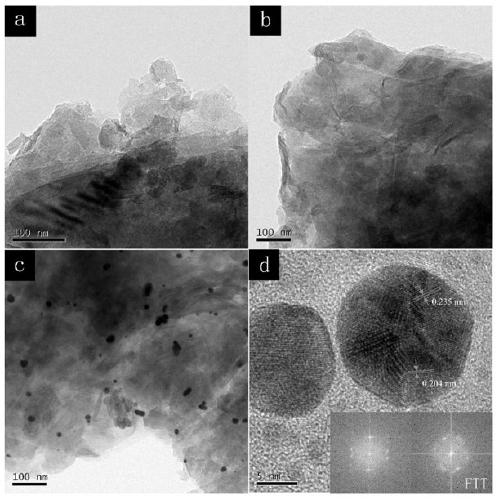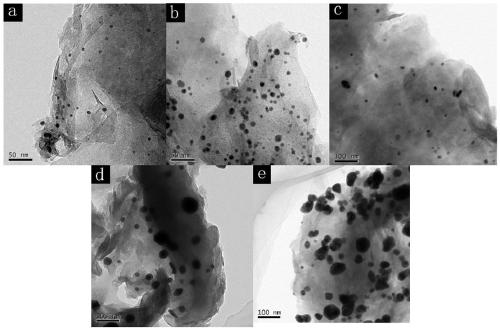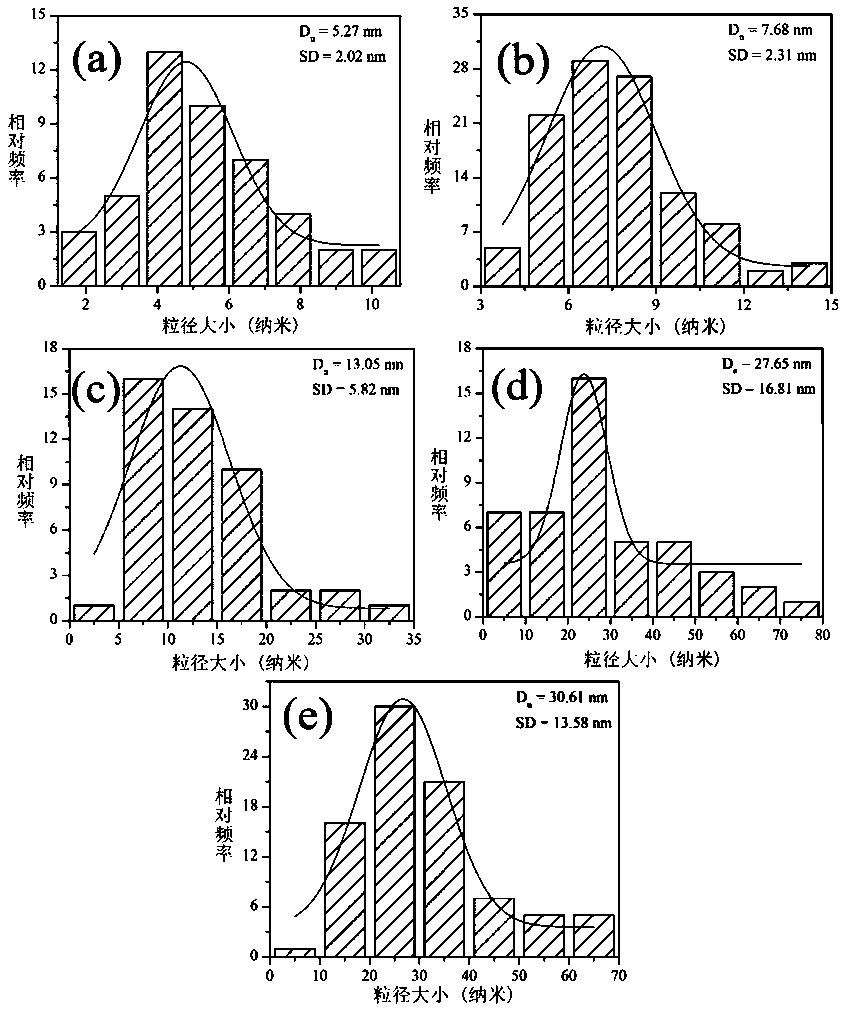Method for treating organic pollutants by utilizing chitosan-modified activated coke in-situ supported nanogold catalyst
A technology for organic pollutants and activated coke, which is applied in water pollutants, organic compound/hydride/coordination complex catalysts, chemical instruments and methods, etc. Secondary pollution and other problems, to achieve good application value and application range, improve mechanical stability, chemical stability effect
- Summary
- Abstract
- Description
- Claims
- Application Information
AI Technical Summary
Problems solved by technology
Method used
Image
Examples
Embodiment 1
[0048] A method for treating organic pollutants (nitroaromatic compounds) by using chitosan-modified active coke with in-situ loaded nano-gold catalyst, specifically adopting chitosan-modified active coke with in-situ loaded nano-gold catalyst to treat 4-nitrogen in water Catalytic treatment of phenol (4-NP) includes the following steps:
[0049] (1) Weigh 5 mg of chitosan modified active coke with in-situ loaded nano-gold catalyst (Au NPs / CTS / AC (1) , Au NPs / CTS / AC (2) , Au NPs / CTS / AC (3) , Au NPs / CTS / AC (4) , Au NPs / CTS / AC (5) ), were added to 50 mL of 0.2 mM 4-nitrophenol solution, and stirred for 30 min to make the chitosan modified activated coke in-situ supported nano-gold catalyst to reach adsorption equilibrium.
[0050] (2) Weigh 5 parts of sodium borohydride, 0.0757g each, and add them to the mixed solution obtained after stirring in step (1) (the molar ratio of 4-nitrophenol to sodium borohydride in the mixed solution = 1: In 200), stir evenly and carry out catalytic red...
Embodiment 2
[0077] A method for treating organic pollutants (nitroaromatic compounds) by using chitosan-modified active coke with in-situ loaded nano-gold catalyst, specifically adopting chitosan-modified active coke with in-situ loaded nano-gold catalyst to treat 2-nitrogen in water The catalytic treatment of base phenol includes the following steps:
[0078] (1) Weigh 5 mg of the chitosan modified active coke prepared in Example 1 and in-situ supported gold nanoparticles (Au NPs / CTS / AC (1) ), added to 50 mL of 2-nitrophenol solution with a concentration of 0.2 mM, and stirred until the chitosan-modified activated coke in-situ supported nano-gold catalyst reached adsorption equilibrium.
[0079] (2) Weigh 0.0757 g of sodium borohydride, add it to the mixed solution obtained after stirring in step (1), stir evenly, and perform catalytic reduction reaction at room temperature to complete the treatment of 4-nitrophenol in water. Immediately after adding sodium borohydride and mixing, take a samp...
Embodiment 3
[0082] A method for treating organic pollutants (nitroaromatic compounds) by using chitosan-modified active coke in-situ loaded nano-gold catalyst, specifically adopting chitosan-modified active coke in-situ loaded nano-gold catalyst to treat 3-nitrogen in water Catalytic treatment of phenol (3-NP) includes the following steps:
[0083] (1) Weigh 5 mg of the chitosan modified active coke prepared in Example 1 and in-situ supported gold nanoparticles (Au NPs / CTS / AC (1) ), added to 50 mL of 0.2 mM 3-nitrophenol solution, and stirred until the chitosan modified activated coke in-situ loaded nano-gold catalyst reached adsorption equilibrium.
[0084] (2) Weigh 0.0757 g of sodium borohydride, add it to the mixed solution obtained after stirring in step (1), stir evenly, and perform catalytic reduction reaction at room temperature to complete the treatment of 3-nitrophenol in water. After adding sodium borohydride and mixing, take a sample and filter within a certain time interval, and d...
PUM
| Property | Measurement | Unit |
|---|---|---|
| particle size | aaaaa | aaaaa |
| particle size | aaaaa | aaaaa |
| particle size | aaaaa | aaaaa |
Abstract
Description
Claims
Application Information
 Login to View More
Login to View More - R&D
- Intellectual Property
- Life Sciences
- Materials
- Tech Scout
- Unparalleled Data Quality
- Higher Quality Content
- 60% Fewer Hallucinations
Browse by: Latest US Patents, China's latest patents, Technical Efficacy Thesaurus, Application Domain, Technology Topic, Popular Technical Reports.
© 2025 PatSnap. All rights reserved.Legal|Privacy policy|Modern Slavery Act Transparency Statement|Sitemap|About US| Contact US: help@patsnap.com



